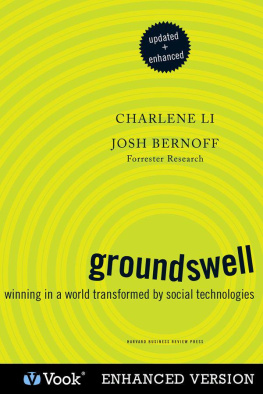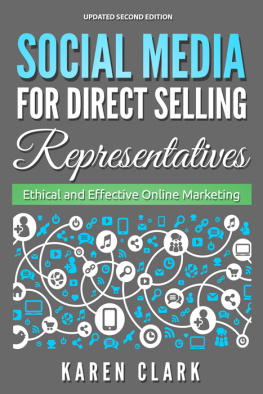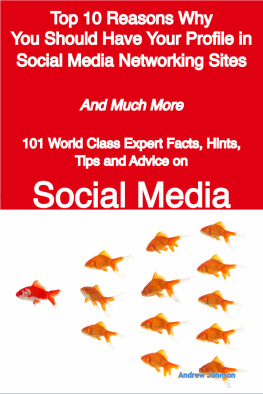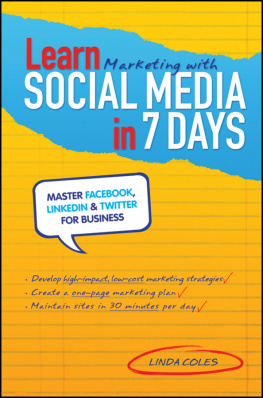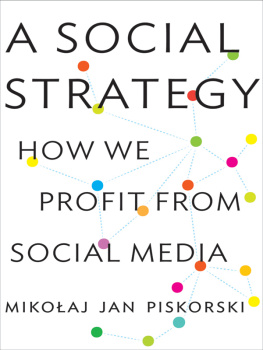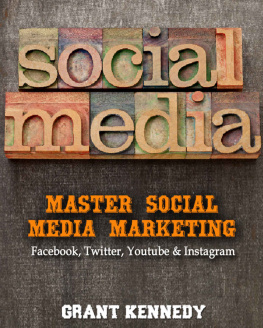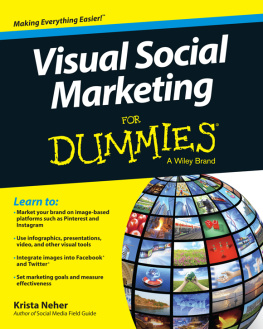Groundswell
Table of Contents
Opening
Foreword & Introduction
To Bill Blue
* * *
"There is video content at this location that is not currently supported for your device. The caption for this content is below."
Intro to the Enhanced Edition (0:55).
Foreword
I n late 2006, Charlene Li and I were talking. I wanted to write a business book, and she was seeing increasing interest in her research on corporate strategy for social technologies. With the support of Forrester Research, we created Groundswell, a case studybased framework for harnessing the wild world of social applications for business. We wanted Groundswell to be rich with the consumer data that Forrester is known for, but filled with our own personal experiences in working with the amazing people who brave corporate resistance to take advantage of the power of social connections online.
Well, it worked.
Groundswell became a bestseller. Why? Because of the same word of mouth that is central to the groundswell as a whole. The people who were grappling with the challenge of how to embrace social applications saw Groundswell as their manual for moving forward. They gave it to their colleagues and managers. And what had been an intimidating and confusing world of friending, tweeting, YouTubing, and wikis became, not just comprehensible, but part of corporate strategy.
The touchpoints of Groundswellthe Social Technographics Profile for analyzing groups participation in online social activities; the POST method for strategy development (people and objectives first, strategy next, technology last); and the five corporate objectives (listing, talking, energizing, supporting, and embracing) have become part of the language of social strategists. Since we published the book, Ive spoken to diverse groups: Koreans, Brazilians, Belgians, Spaniards, and Americans from California to Rhode Island; the management team at Walmart and the marketing department for a company that makes replacement hip joints; the Web 2.0 Expo and Americas milk processors, along with hundreds of others. The one constant is that people are eager to learn about this new world.
Things have changed since we wrote Groundswell. In 2007, 56 percent of online Americans used some form of social technology; by 2010, penetration had reached 81 percent. Facebook has grown beyond 500 million members worldwide, Twitter has become a mass phenomenon, Myspace has faded. But because we advised people to focus on the relationships, not the technologyand because, amid all this growth, the trend toward online social relationships has only grownGroundswell has remained relevant.
In revising the book for this new edition, I reviewed everything. Because Forresters Technographics group tracks the statistics regularly in surveys, I was able to update nearly all of the statistics to reflect current trends and behaviors. Fortunately, the case studies were all still pertinent, and I have retained them with minor changes and updates.
I also added two new chapters to reflect the two biggest trends our clients have asked about in the three years since the book was originally published. Because Twitter, which was new when we first wrote Groundswell, is now an effective tool for all five objectives, I added on the stages of social maturity of organizations.
Im grateful to the management at Forrester and to Harvard Business Review Press for allowing me to update the book so it can remain relevant for years to come. I look forward to hearing from you as you enter the world of the groundswell.
Josh Bernoff,
Cambridge Massachusetts,
January, 2011
* * *
"There is video content at this location that is not currently supported for your device. The caption for this content is below."
Intro to the Book (1:04).
introduction
Rick Clancy seemed worried.
Rick is a fifty-ish, powerful-looking man with graying hair and, until today, a confident manner that always reflected his control of the situation. In his role as head of communications for Sony Electronics, wed seen him deal with tough business reporters, nasty competitors, product recalls, and more than one cranky company CEO, all with grace and confidence.
We were meeting him for breakfast before an all-day meeting. He was grappling with a force he didnt understand, one that was growing all the time. Bloggers. Discussion groups. YouTube. Consumers whom hed never met were rating his companys products in public forums that he had no experience with and no way to influence.
All were assaulting his companys cherished brand, and traditional PR tools were as useless as a broadsword against a rain of poison darts. Rick had decided it was time to take matters into his own hands, to become a blogger himself. For this veteran of almost two decades of managing his companys image, the goal looked daunting. It looked like the unknown.
From where we sit, Rick Clancy is a symbol. He and thousands of corporate executives just like him are now dealing with a trend we call the groundswell, a spontaneous movement of people using online tools to connect, take charge of their own experience, and get what they needinformation, support, ideas, products, and bargaining powerfrom each other. The groundswell is broad, ever shifting, and ever growing. It encompasses blogs and wikis; podcasts and YouTube; and consumers who rate products, buy and sell from each other, write their own news, and find their own deals. Its global. Its unstoppable. It affects every industrythose that sell to consumers and those that sell to businessesin media, retail, financial services, technology, and health care. And its utterly foreign to the powerful companies and institutionsand their leadershipsthat run things now.
Simply put, the groundswell is a social trend in which people use technologies to get the things they need from each other instead of from companies. If youre in a company, this is a challenge.
The groundswell phenomenon is not a flash in the pan. The technologies that make it work are evolving at an ever-increasing pace, but the phenomenon itself is based on people acting on their eternal desire to connect. It has created a permanent, long-lasting shift in the way the world works. This book exists to help companies deal with the trend, regardless of how the individual technology pieces change. We call this groundswell thinking.
why we wrote this book
At Forrester Research, we provide strategy advice to clients all over the world. Since we wrote the Forrester Report Social Computing about the groundswell trend in 2006, the pace of change has been accelerating, and the number of clients asking us questions about it has been increasing. The noise around the topic has been growing, too. With all the books and articles about blogging, communities, and wikis, its hard for company strategists to know where to start. We wanted to give our clients, and the world, a clear perspective on the whole trend, not just pieces of it, with a clear set of strategic recommendations. We also wanted to bring to bear the assets weve accumulated from analyzing the effects of technology on business for more than a decade: consumer data, real client stories, and a focus on measurable business success. Finally, we wanted to package it up in a highly readable format, with real stories of the people who make the groundswell such an amazing place, to provide a little insight into the psychology behind whats happening.
whats in this book
Weve structured the book into three sections. Basically, the first section tells what the groundswell is and lays out the basic tools you need to understand it. The second explains what to do about it. And the third helps you use it to succeed within your company. These three parts include fourteen chapters:

